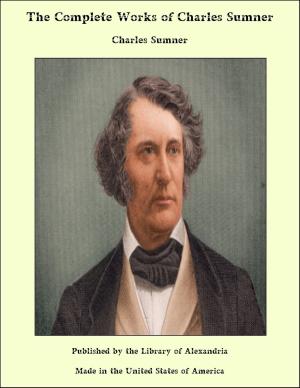How to Teach a Foreign Language
Nonfiction, Religion & Spirituality, New Age, History, Fiction & Literature| Author: | Otto Jespersen | ISBN: | 9781465616289 |
| Publisher: | Library of Alexandria | Publication: | March 8, 2015 |
| Imprint: | Language: | English |
| Author: | Otto Jespersen |
| ISBN: | 9781465616289 |
| Publisher: | Library of Alexandria |
| Publication: | March 8, 2015 |
| Imprint: | |
| Language: | English |
About twenty years ago, when I began to be interested in a reformation of the teaching of modern languages, there were not, as there are now, numerous books and articles on the subject, but merely scattered hints, especially in the works of Sweet and Storm. It was not long, however, before the movement found itself well under headway, especially in Germany. In Scandinavia it began at the appearance of the adaptation which I had made of Felix Franke’s capital little pamphlet, “Die praktische spracherlernung auf grund der psychologie und der physiologie der sprache.” At just about the same time, Western in Norway and Lundell in Sweden came forward with similar ideas, and at the Philological Congress in Stockholm in 1886 we three struck a blow for reform. We founded a society, of course, and we gave it the name Quousque tandem (which for the benefit of those not acquainted with Latin may be rendered “Cannot we soon put an end to this?”), that Ciceronian flourish with which Viëtor had shortly before heralded his powerful little pamphlet, “Der sprachunterricht muss umkehren.” Our Scandinavian society published some small pamphlets, and for a time even a little quarterly paper. But the movement soon reached that second and more important stage when the teachers began to put the reform into practice and when the editors of school-books began to give it more and more consideration, until at present it may be said that the reformed method is well on the way to permanent favour, at least as far as younger teachers have anything to say in the matter. What is the method, then, that I allude to? Well, if the question means, what is it called, I find myself in some embarrassment, for the method resembles other pet children in this respect, that it has many names. Though none of these are quite adequate, yet if I mention them all, I can perhaps give a little preliminary notion of what the matter is all about. The method is by some called the “new” or “newer”; in England often “die neuere richtung”; by others the “reform-method,” again the “natural,” the “rational,” the “correct,” or “sensible” (why not praise one’s wares as all dealers do in their advertisements?); the “direct” comes a little nearer, the “phonetical” indicates something of its character, but not nearly enough, likewise the “phonetical transcription method,” for phonetics and phonetical transcription is not all; the “imitative” again emphasizes another point; the “analytical” (as contrasted with the constructive) could perhaps also be applied to other methods; the “concrete” calls attention to something essential, but so does the German “anschauungsmethode” too; “the conversation-method” reminds us perhaps too much of Berlitz schools; words with “anti,” like the “anticlassical,” “antigrammatical,” or “antitranslation” method, are clumsy and stupidly negative—so there is nothing left for us but to give up the attempt to find a name, and recognize that this difficulty is due to the fact that it is not one thing, but many things that we have to reform, and that is of course the reason why the reformers themselves fall into so many sub-parties: the one lays all the stress on one point, the other on another point. However, there is certainly enough to do for any one who wants to get better results out of the teaching of foreign languages than have hitherto been the rule.
About twenty years ago, when I began to be interested in a reformation of the teaching of modern languages, there were not, as there are now, numerous books and articles on the subject, but merely scattered hints, especially in the works of Sweet and Storm. It was not long, however, before the movement found itself well under headway, especially in Germany. In Scandinavia it began at the appearance of the adaptation which I had made of Felix Franke’s capital little pamphlet, “Die praktische spracherlernung auf grund der psychologie und der physiologie der sprache.” At just about the same time, Western in Norway and Lundell in Sweden came forward with similar ideas, and at the Philological Congress in Stockholm in 1886 we three struck a blow for reform. We founded a society, of course, and we gave it the name Quousque tandem (which for the benefit of those not acquainted with Latin may be rendered “Cannot we soon put an end to this?”), that Ciceronian flourish with which Viëtor had shortly before heralded his powerful little pamphlet, “Der sprachunterricht muss umkehren.” Our Scandinavian society published some small pamphlets, and for a time even a little quarterly paper. But the movement soon reached that second and more important stage when the teachers began to put the reform into practice and when the editors of school-books began to give it more and more consideration, until at present it may be said that the reformed method is well on the way to permanent favour, at least as far as younger teachers have anything to say in the matter. What is the method, then, that I allude to? Well, if the question means, what is it called, I find myself in some embarrassment, for the method resembles other pet children in this respect, that it has many names. Though none of these are quite adequate, yet if I mention them all, I can perhaps give a little preliminary notion of what the matter is all about. The method is by some called the “new” or “newer”; in England often “die neuere richtung”; by others the “reform-method,” again the “natural,” the “rational,” the “correct,” or “sensible” (why not praise one’s wares as all dealers do in their advertisements?); the “direct” comes a little nearer, the “phonetical” indicates something of its character, but not nearly enough, likewise the “phonetical transcription method,” for phonetics and phonetical transcription is not all; the “imitative” again emphasizes another point; the “analytical” (as contrasted with the constructive) could perhaps also be applied to other methods; the “concrete” calls attention to something essential, but so does the German “anschauungsmethode” too; “the conversation-method” reminds us perhaps too much of Berlitz schools; words with “anti,” like the “anticlassical,” “antigrammatical,” or “antitranslation” method, are clumsy and stupidly negative—so there is nothing left for us but to give up the attempt to find a name, and recognize that this difficulty is due to the fact that it is not one thing, but many things that we have to reform, and that is of course the reason why the reformers themselves fall into so many sub-parties: the one lays all the stress on one point, the other on another point. However, there is certainly enough to do for any one who wants to get better results out of the teaching of foreign languages than have hitherto been the rule.















